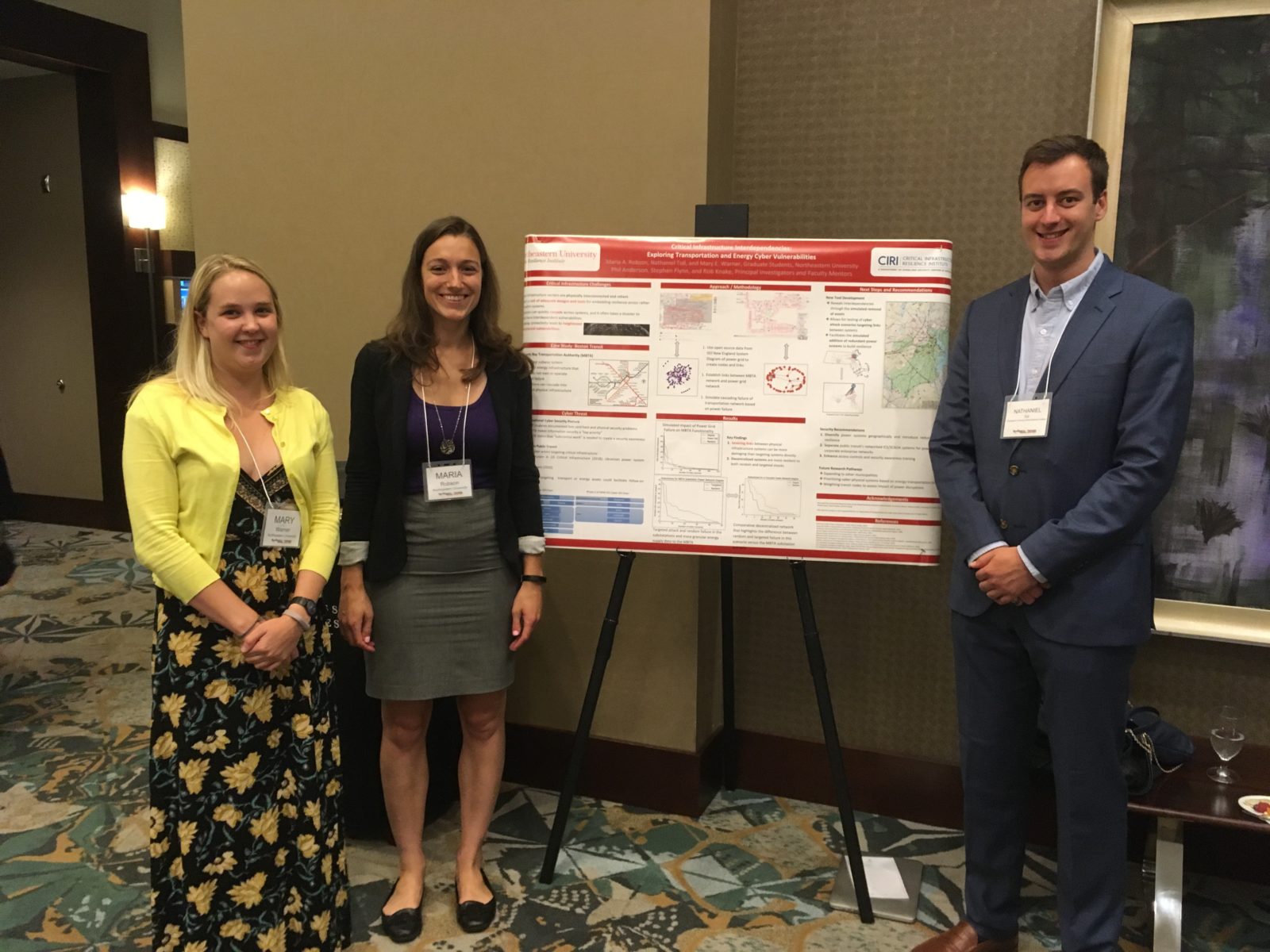The GRI team's work on how to keep the Boston subways running (not necessarily on time, but at least running) while under various types of cyber attack was outstanding … and hit close to home. As I told them, living near Coolidge Corner, I've got a serious Green Line dependency https://t.co/lFJgokb14B
— Defend the Future -🌻 (@andybochman) August 22, 2018
Exploring transportation and energy cyber vulnerabilities at Resilience Week

On Monday, August 20 through August 24, three graduate student researchers from the Global Resilience Institute attended the Resilience Week conference in Denver, Colorado. While at the conference the students took the opportunity to collaborate with other prominent researchers in the field of resilience to expand their collective knowledge. Although the conference focused on the concept of resilience as a whole, there were many different fields and an array of expertise present, including but not limited to infrastructure, cybersecurity, and societal resilience. Part of the unique nature of this team of graduate students comes from their breadth of academic expertise.
Maria Robson is currently pursuing her PhD in Northeastern University’s Political Science Department, Lizzy Warner is pursuing her PhD in Interdisciplinary Engineering as part of the Civil and Environmental Engineering Department, and Nate Toll is pursuing his Masters in Cybersecurity. Together, the three student researchers worked on a project for the conference that included a paper, poster, and “lightning talk” presentation. The title of their work was: “Critical Infrastructure Interdependencies: Exploring Transportation and Energy Cyber Vulnerabilities.”
For this research, Warner provided the programming and engineering analytics, while Toll provided the cyber threat scenario, and Robson contextualized the findings for policy implications. Due to the interdisciplinary nature of their research, this inherently required Toll, Warner, and Robson to develop strong communication skills that are not typically asked of researchers in any one given field. In order to make their work successful each team member needed to translate the technical details of their contribution in a manner in which the other team members could easily digest. This interdisciplinary communication was what ultimately set them apart and made their work a success.
The research was a continuation of previous work Warner and Robson had presented at The Department of Homeland Security (DHS) Centers of Excellence (COE) Summit. To build upon the previous research, Warner, Robson, and Toll developed a cyberattack scenario in which one or two interdependent infrastructure systems would be targeted. For the purpose of their case study, the team analyzed how a cyberattack on the electric grid would have cascading impacts to the Massachusetts Bay Transportation Authority (MBTA). The initial findings indicated that a targeted attack on the power grid may cause more rapid failure to the MBTA as opposed to an attack and cascading failure on the MBTA itself. The team hopes to expand this research to other infrastructure sectors and continue to confirm their findings.
A key element to presenting on the research was the academic diversity of the team members. Because the conference as a whole attracted academics and practitioners from many different fields, the questions that were posed to the team also came from an array of differing interests. One attendee asked how stakeholders were going to be engaged while another attendee asked about the programming language and packages that were used. While the team had become relatively proficient in describing and understanding each other’s contributions, having three team members present helped to field this array of questions in a more in-depth manner. Relying on strong teamwork provided the chance to offer each attendee a unique and targeted answer to their questions based upon their own individual interests and background.
The Global Resilience Institute as a whole supports these collaborative efforts and Warner, Robson, and Toll hope to continue to work together in the future. Societal problems are inherently interdisciplinary and therefore the researchers tackling these problems should be too.
